First Near-Complete Sauropod Dinosaur Skull Found In Australia Hints At Ancient Links Between Continents
AncientPages.com - In May and June of 2018, Australia’s first near-complete skull of a sauropod – a group of long-tailed, long-necked, small-headed dinosaurs – was found on a sheep station northwest of Winton in Queensland.
The original skull bones of the sauropod dinosaur Diamantinasaurus matildae. Trish Sloan / Australian Age of Dinosaurs Museum
I was part of the dig team from the Australian Age of Dinosaurs Museum that made the discovery, and subsequently had the privilege of leading the team that studied the skull. After years of work, our results are published today in Royal Society Open Science.
The skull belonged to a creature we have dubbed “Ann”: a member of the species Diamantinasaurus matildae which shows surprising similarities to fossils found halfway across the world, lending weight to the theory that dinosaurs once roamed between Australia and South America via an Antarctic land connection.
A good skull is hard to find
The sauropod dinosaurs have been a source of lifelong fascination for me, and finding a sauropod skull was one of my childhood dreams. Sadly, the fossil record is biased towards preserving sauropod limbs, vertebrae and ribs, and heavily against skulls.
This makes sense when you consider the processes that act on an organism’s body after it dies, which palaeontologists call taphonomy.
Large, robust limb bones are resistant to decomposition, and if they are buried rapidly they might fossilise quite readily. Vertebrae and ribs comprise a significant proportion of a vertebrate skeleton, increasing their odds of preservation.
By contrast, sauropod skulls were relatively small, made up of many delicate bones that were only loosely held together by soft tissue, and seemingly easily detached from the end of the neck. They might also have been prime targets for carnivorous dinosaurs: the only previously described sauropod braincase from Australia preserves several bite marks from fierce theropods.
The bones of the skull were found around two metres beneath the surface, scattered over an area of about nine square metres. Much of the right side of the face is missing, but most of the left is present. Sadly, many of the bones show signs of distortion (presumably a result of post mortem scavenging or trampling), which makes physical reassembly of the skull a delicate process.
Modern technology recreates an ancient animal
This being the case, we set out to reconstruct the skull digitally. We CT scanned the bones at St Vincent’s Hospital in Melbourne. This enabled the internal features of each bone to be observed on a computer.
Inside one bone in the snout (which we also had scanned at the Australian Synchrotron), we found replacement teeth. It has long been known that sauropods, like crocodiles today, continually replaced their teeth throughout their lives.
CT scanning a sauropod skull at St Vincent’s Hospital, Melbourne. Adele Pentland
We also scanned all of the bones with a surface scanner, enabling detailed 3D models of each bone to be made on a computer. The skull could then be reassembled in a virtual space with no risk of damage to the fossils themselves.
The teeth in the new sauropod skull were very similar to those found at other sites in the Winton area. Comparisons with Australia’s only other fragmentary sauropod skull (also from Winton) revealed additional similarities.
Meet Diamantinasaurus matildae
Our skull belongs to the species Diamantinasaurus matildae. Diamantinasaurus would have been about as long as a tennis court, as tall as basketball ring at the shoulder, and weighed ~25 tonnes – about as much as two fire engines.
Diamantinasaurus occupies a low branch on the family tree of a group of sauropods called titanosaurs. Other members of the titanosaur group (from higher branches on their family tree) include the largest land animals that ever lived, such as Patagotitan and Argentinosaurus, which exceeded 30 metres in length. Titanosaurs were the only sauropods to live right until the end of the Cretaceous Period (66 million years ago), when the age of dinosaurs came to a close.
Diamantinasaurus has a rounded snout, typical of medium- to high-level browsing sauropods. Its teeth are robustly constructed, but those from other sites show little sign of wear by soil or grit, reinforcing the idea Diamantinasaurus preferred to feed some distance above ground level.
Only two replacement teeth are present in each tooth socket, implying that Diamantinasaurus replaced its teeth relatively slowly. And finally, the teeth are restricted to the front of the snout, meaning that Diamantinasaurus, like all other sauropods, did not chew its food.
Family resemblances
We compared our sauropod skull with others from around the world. The most similar skull was that of Sarmientosaurus musacchioi, which lived in southern South America. Diamantinasaurus and Sarmientosaurus lived at around the same time (about 95 million years ago), and at around the same latitude (50°S).
We had previously hypothesised that these two sauropods were close relatives, albeit on the basis of limited evidence. The new skull shores up that idea in a big way: bone for bone, the skulls of Diamantinasaurus and Sarmientosaurus are extremely similar. This might seem strange, given the great physical distance between South America and Australia today. However, back then each of those continents retained a lingering land connection with Antarctica.
Read more: A key feature contributed to sauropods getting so enormous, new dino foot study reveals
Sauropods seemingly preferred warmer climates at low to medium latitudes. However, 95 million years ago the climate was extremely warm, even by the warm standards of the Cretaceous. With polar latitudes more amenable for sauropods, these scaly behemoths – and other landlubbing animals – could trundle through lush forests at the bottom of the world between South America and Antarctica.
It is a privilege to be able to finally put a face to the name Diamantinasaurus matildae. Future discoveries will hopefully help cement its status as one of the most completely understood titanosaurs worldwide.
Written by Stephen Poropat, The Conversation
Provided by The Conversation
This article is republished from The Conversation under a Creative Commons license. Read the original article
More From Ancient Pages
-
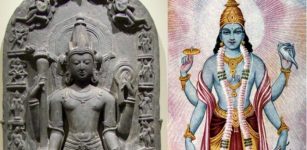 Vishnu: Supreme, Universal Hindu God Whose Avatars Reach Nations, Cultures And Races
Featured Stories | Jul 25, 2019
Vishnu: Supreme, Universal Hindu God Whose Avatars Reach Nations, Cultures And Races
Featured Stories | Jul 25, 2019 -
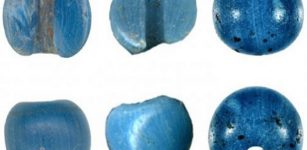 How Did These Beautiful Venetian Glass Beads Reach North America Long Before Columbus?
Archaeology | Feb 15, 2021
How Did These Beautiful Venetian Glass Beads Reach North America Long Before Columbus?
Archaeology | Feb 15, 2021 -
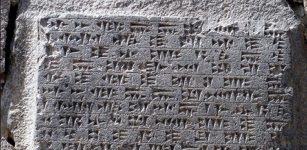 Ancient City Of Metsamor – Captured And Destroyed By Argishti I, The Ruler Of Urartu
Civilizations | Sep 11, 2015
Ancient City Of Metsamor – Captured And Destroyed By Argishti I, The Ruler Of Urartu
Civilizations | Sep 11, 2015 -
 Etowah Indian Mounds: A Legacy Of The Ancient Mississippian Culture
Featured Stories | Oct 9, 2018
Etowah Indian Mounds: A Legacy Of The Ancient Mississippian Culture
Featured Stories | Oct 9, 2018 -
 How Did The Renaissance Change Europe?
Ancient History Facts | Oct 10, 2019
How Did The Renaissance Change Europe?
Ancient History Facts | Oct 10, 2019 -
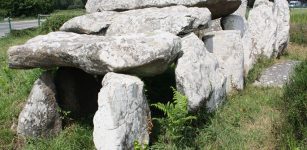 Mysterious Megalithic Stones Of Carnac, France – An Unsolved Neolithic Enigma
Civilizations | Oct 12, 2018
Mysterious Megalithic Stones Of Carnac, France – An Unsolved Neolithic Enigma
Civilizations | Oct 12, 2018 -
 On This Day In History: Historical Scandal Took Place In France – On July 31, 1451
News | Jul 31, 2016
On This Day In History: Historical Scandal Took Place In France – On July 31, 1451
News | Jul 31, 2016 -
 Triumphal Arch Of Roman Emperor Constantine And His Great Vision
Featured Stories | Jul 12, 2017
Triumphal Arch Of Roman Emperor Constantine And His Great Vision
Featured Stories | Jul 12, 2017 -
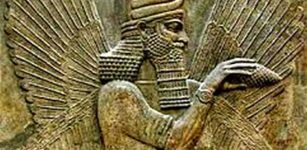 Glory And Fall Of Babylon Dedicated To The Cult Of Marduk
Featured Stories | Oct 11, 2016
Glory And Fall Of Babylon Dedicated To The Cult Of Marduk
Featured Stories | Oct 11, 2016 -
 Ancient Native American Stories Of Great Floods In Tennessee Confirmed By Scientists – 1867 Flood Was Not The Worst One
News | Aug 26, 2020
Ancient Native American Stories Of Great Floods In Tennessee Confirmed By Scientists – 1867 Flood Was Not The Worst One
News | Aug 26, 2020 -
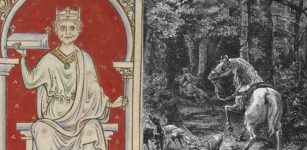 Was King William II Murdered In The New Forest?
Featured Stories | Aug 5, 2021
Was King William II Murdered In The New Forest?
Featured Stories | Aug 5, 2021 -
 Clovis People Invented ‘Fluting’ Ancient Stone Weaponry
Archaeology | Apr 5, 2017
Clovis People Invented ‘Fluting’ Ancient Stone Weaponry
Archaeology | Apr 5, 2017 -
 Ancient Secrets Of The Nine Unknown Men: Guardians Of Forbidden Knowledge Hidden From Humanity
Featured Stories | Aug 28, 2014
Ancient Secrets Of The Nine Unknown Men: Guardians Of Forbidden Knowledge Hidden From Humanity
Featured Stories | Aug 28, 2014 -
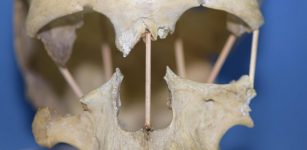 DNA From 35,000-Year-Old Romanian Skull Reveals Flaws In The Theory Of Evolution
Archaeology | May 25, 2021
DNA From 35,000-Year-Old Romanian Skull Reveals Flaws In The Theory Of Evolution
Archaeology | May 25, 2021 -
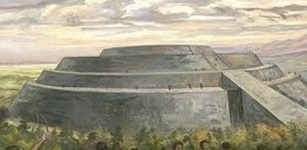 Cuicuilco Circular Pyramid: Ancient Astronomical Observatory And Place Of Power
Civilizations | Aug 24, 2021
Cuicuilco Circular Pyramid: Ancient Astronomical Observatory And Place Of Power
Civilizations | Aug 24, 2021 -
 Elusive Celtic Otherworld Where Tuatha Dé Danann Reside And Time Passes Slower
Celtic Mythology | Apr 7, 2018
Elusive Celtic Otherworld Where Tuatha Dé Danann Reside And Time Passes Slower
Celtic Mythology | Apr 7, 2018 -
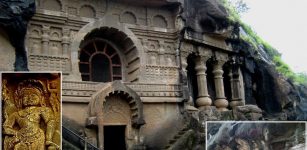 Pandavleni Buddhist Caves: Sculptures, Inscriptions And Sophisticated Water Management System
Civilizations | Dec 8, 2016
Pandavleni Buddhist Caves: Sculptures, Inscriptions And Sophisticated Water Management System
Civilizations | Dec 8, 2016 -
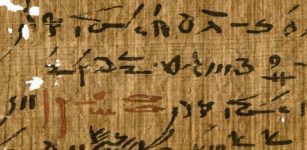 Red And Black Ink Used In Egyptian Papyri Reveal Ancient Writing Practices
News | Oct 27, 2020
Red And Black Ink Used In Egyptian Papyri Reveal Ancient Writing Practices
News | Oct 27, 2020 -
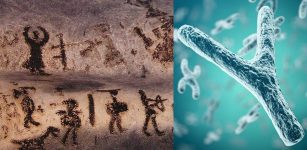 Puzzling Biological Event 7,000 Years Ago – Something Weird Happened To Men
Archaeology | Jun 1, 2018
Puzzling Biological Event 7,000 Years Ago – Something Weird Happened To Men
Archaeology | Jun 1, 2018 -
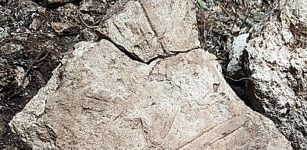 Extremely Brutal Conflicts Among Maya Broke Out Before Civilization’s Decline
Archaeology | Aug 8, 2019
Extremely Brutal Conflicts Among Maya Broke Out Before Civilization’s Decline
Archaeology | Aug 8, 2019


